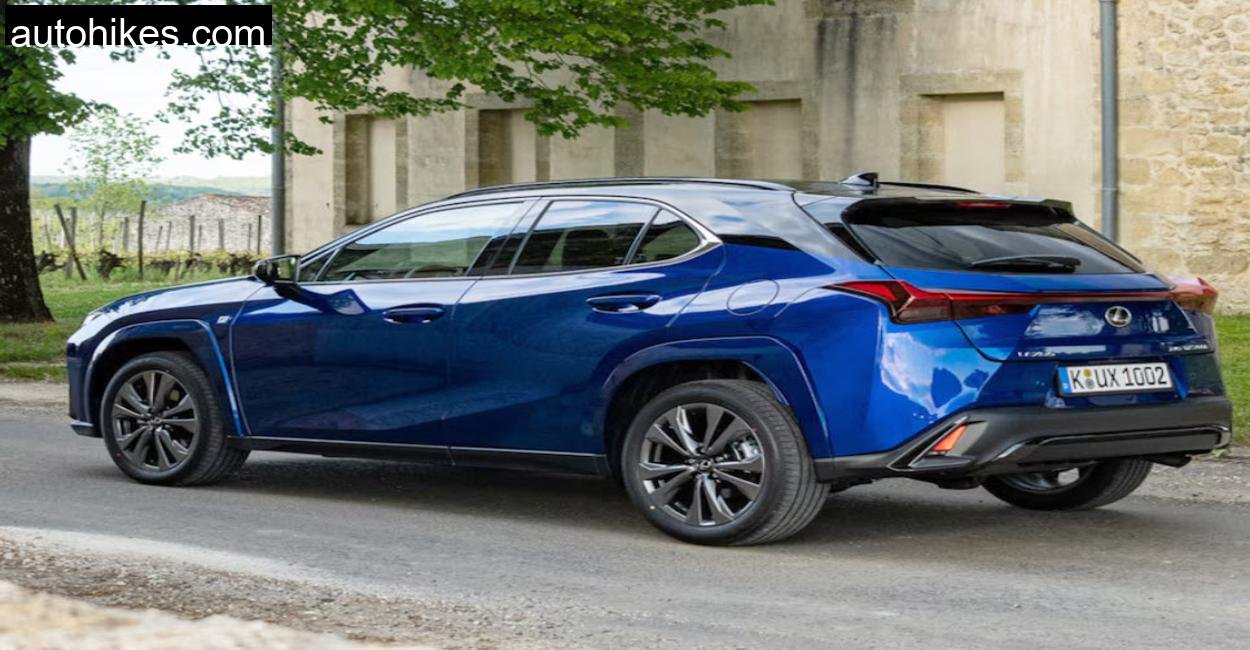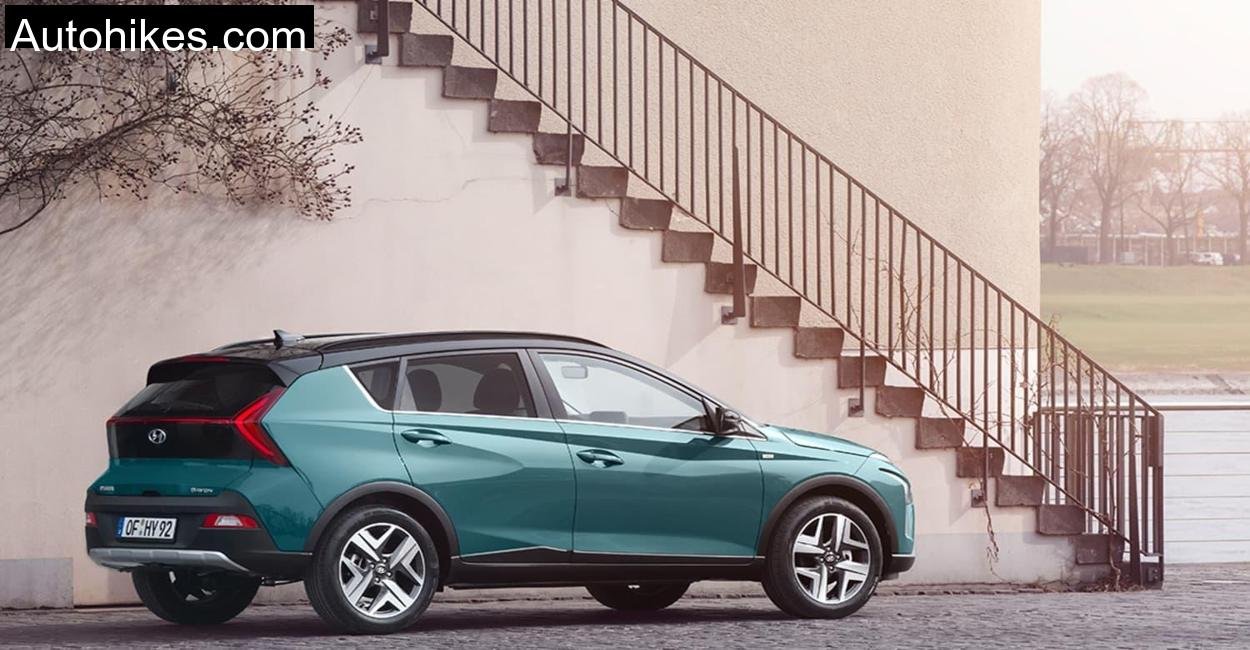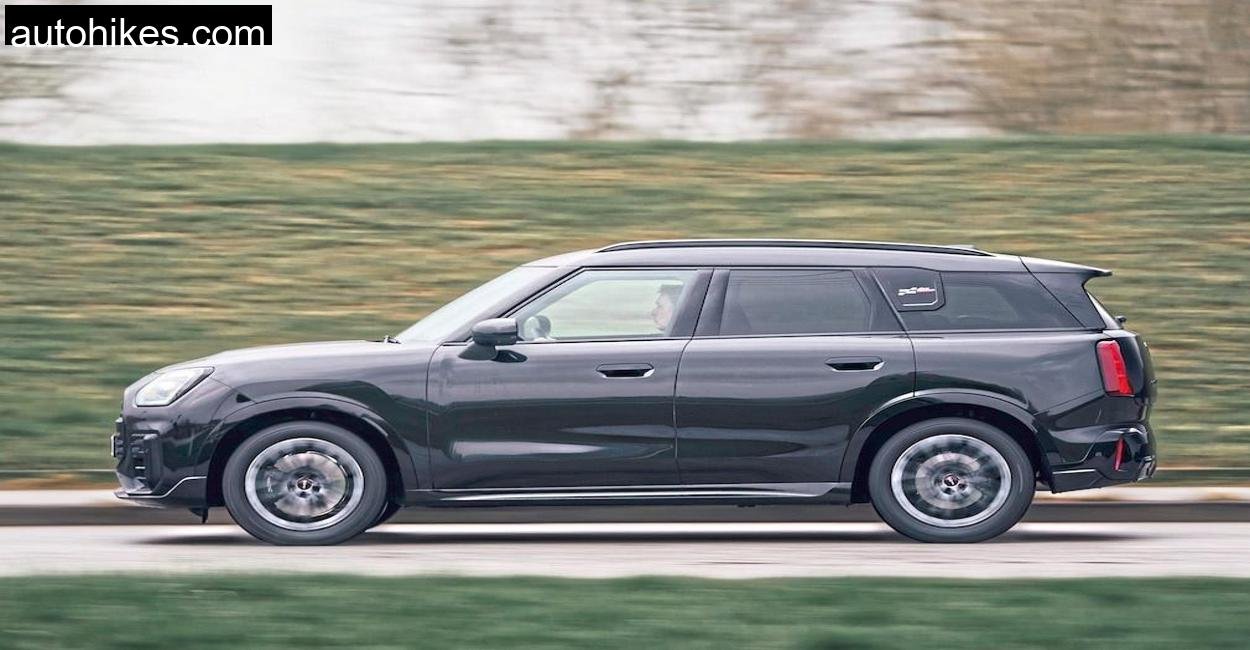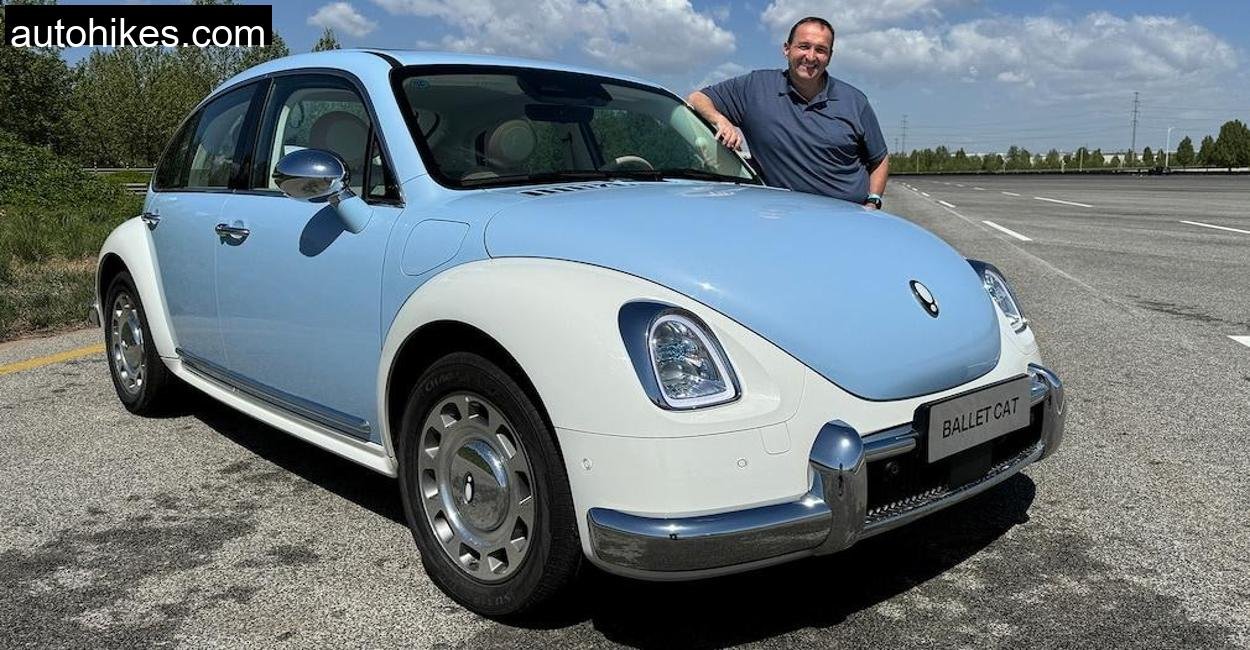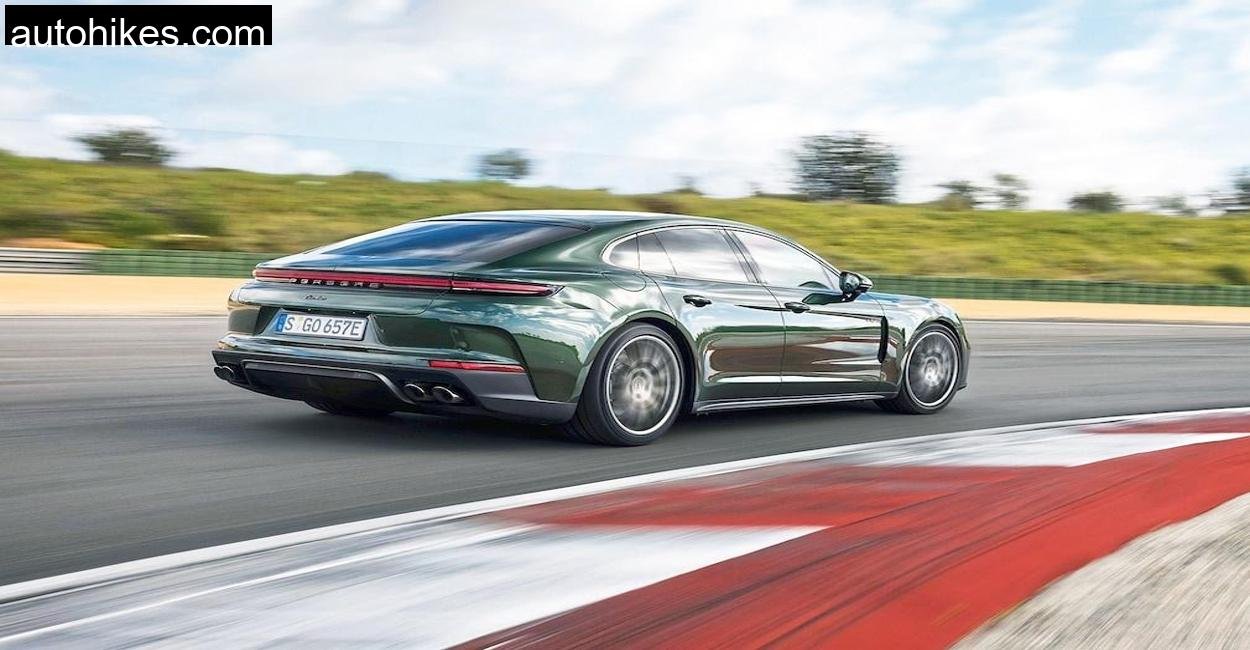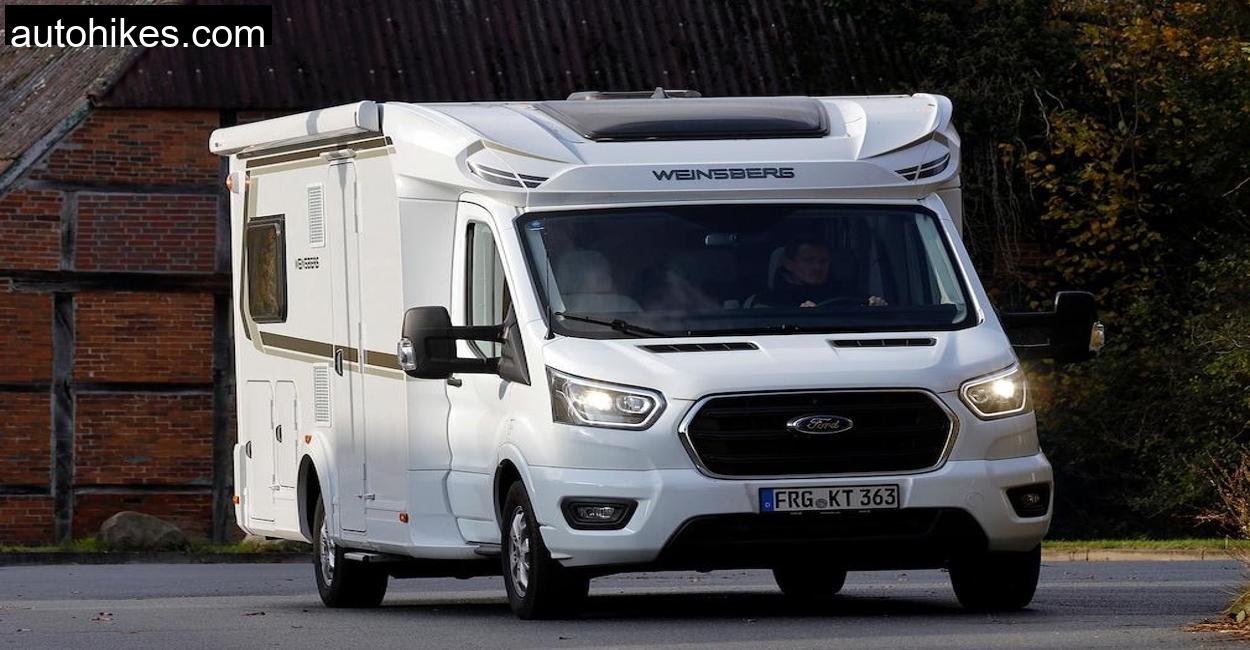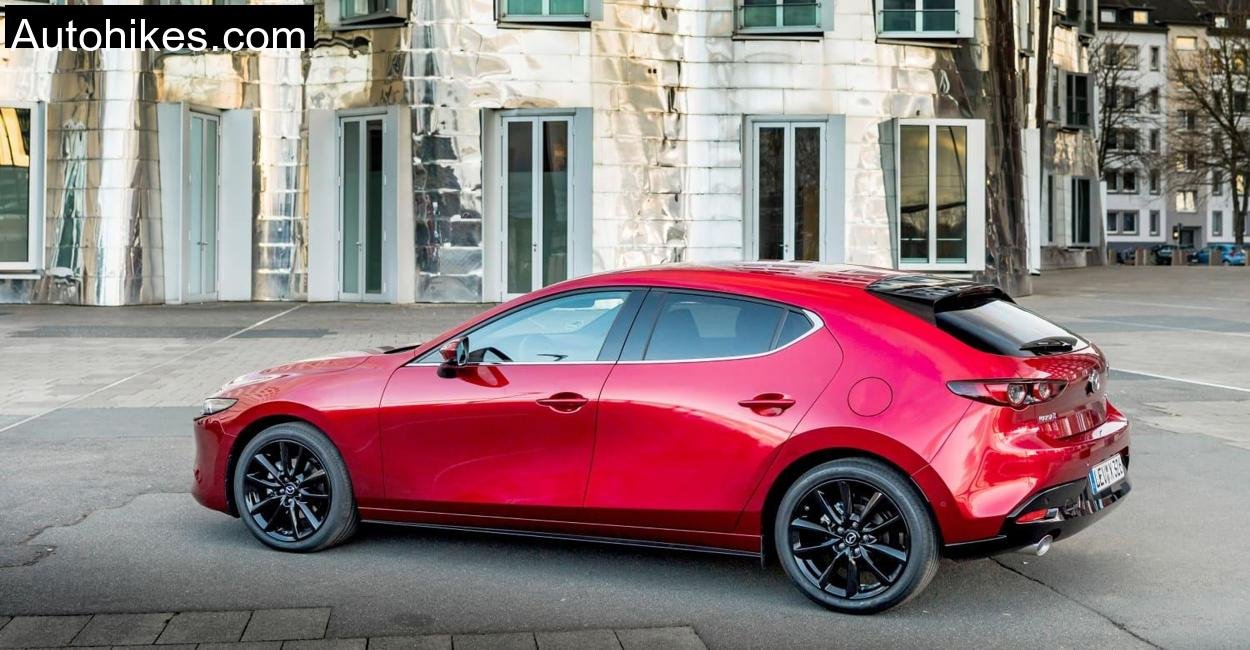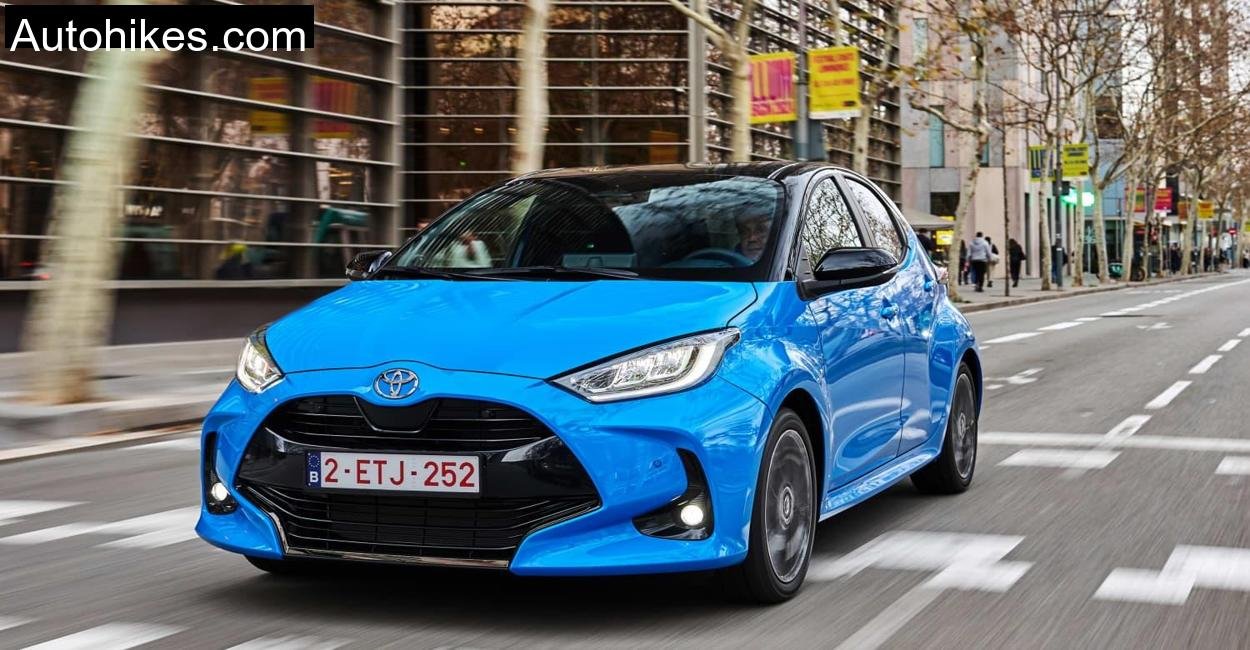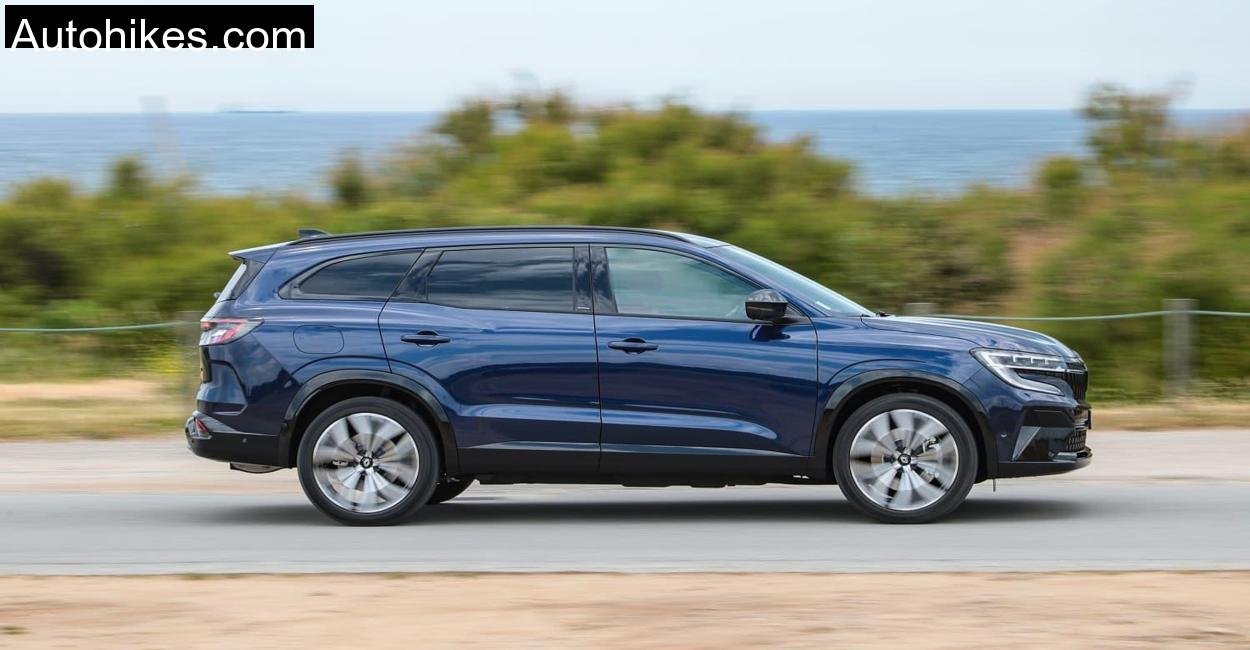It was a cloudy morning in the Hahnenkamm hills, the kind where the air carries the earthy scent of pine and damp moss, and the roads are carved like ribbon candy across gentle ridges and steep slopes. The village roofs shimmered with dew, and the hush of the forest made the perfect backdrop to meet a car that doesn’t shout for attention, but rather hums with thoughtful design and composed confidence. The Lexus UX 300h.
This wasn’t my first time in this region of Germany, but it was my first time piloting a Lexus through its winding, narrow ascents and long panoramic stretches. The Hahnenkamm, known more for its Alpine charm and less for flat-out speed testing, seemed a strange choice at first. But for a crossover like the UX 300h, one that banks heavily on hybrid sensibility and luxury finesse over raw aggression, it was exactly the terrain I needed.
First Impressions in a Region That Rewards the Subtle
Pulling the UX 300h out of a modest Alpine lodge parking lot, the first thing that struck me was the silence. The car doesn’t start in the conventional sense, it simply wakes up. No engine roar, no vibrations, just lights and calm readiness. This is typical hybrid territory, but the Lexus does it more elegantly than most.
The 2024 facelifted model I was in had the E-Four configuration, meaning it came with all-wheel drive powered by an additional 41 hp electric motor at the rear. It wore a striking coat of Celestial Blue, and the stance was slightly more angular than your average compact SUV, something I appreciated, given that so many cars in this segment tend to look like scaled-up soap bars.
Here are the technical specs of the Lexus UX 300h I tested:
For accuracy and reliability, all technical info is sourced instantly from the official websites of Lexus’s.
| Specification | Details |
| Model | Lexus UX 300h (2024) |
| Drivetrain | E-Four All-Wheel Drive |
| Engine | 2.0L Inline-4 Gasoline (Hybrid) |
| Electric Motor (Rear) | 41 hp Permanent Magnet |
| Total System Output | 199 hp |
| Transmission | e-CVT (Electronically Controlled CVT) |
| 0–100 km/h | 8.1 seconds |
| Top Speed | 177 km/h |
| Battery Type | Lithium-ion, 222-volt |
| Weight | Up to 1635 kg |
| Length x Width x Height | 4495 mm x 1840 mm x 1540 mm |
| Tire Spec | 225/50 R18 |
| Fuel Consumption | ~5.0 L/100 km (claimed) |
| CO₂ Emissions | 114 g/km |
| Luggage Capacity | 315–1231 liters |
| Price (Base AWD) | €60,900 |
Under the Skin: Powertrain That Whispers but Persists
On paper, 199 horsepower doesn’t sound like much, especially when it’s tasked with moving over 1.6 tons of luxury-bred compact crossover. But the UX 300h doesn’t pretend to be something it’s not. It’s a cruiser, a commuter, and a thinker’s car. Still, up the initial steep section of Hahnenkammstraße, I was pleasantly surprised by the E-Four system. It put power down predictably and evenly, and the torque felt instant despite the usual elastic feel of the CVT.
Now, about that transmission, it’s still a CVT, so yes, the “rubber band” effect is present. Put your foot flat down and the revs will soar before the acceleration catches up. It’s not sporty, not by a long stretch. But drive with intent rather than impatience, and it rewards you with smooth, uninterrupted momentum.
At city speeds through Sonthofen earlier that morning, the UX tiptoed through traffic in near silence, flipping seamlessly between electric and petrol modes. At cruising speed around the alpine lakes and the foothills, the engine noise faded into a whisper, even under load.
Suspension and Handling: Serenity Over Sport
This was where the UX really impressed me. Suspension tuning in this facelifted model strikes an admirable balance. It’s soft enough to absorb sharp cobblestone impacts, tested thoroughly in the sleepy town of Bad Hindelang, but never wallowy or disconnected. On the longer curves climbing toward Oberjoch Pass, body roll was well-managed, and steering had a pleasantly direct ratio.
No, it’s not a car that begs to be driven hard, but it’s not scared of a quick bend either. Grip from the 18-inch tires was confident, and the all-wheel drive system didn’t flinch, even when I accelerated out of tighter turns with a touch of moisture on the asphalt.
The Hahnenkamm region’s ever-changing elevations and road textures offered the perfect backdrop to test ride quality, and the UX delivered a consistent, unruffled demeanor.
Inside the Cabin: A Calm, Well-Crafted Sanctuary
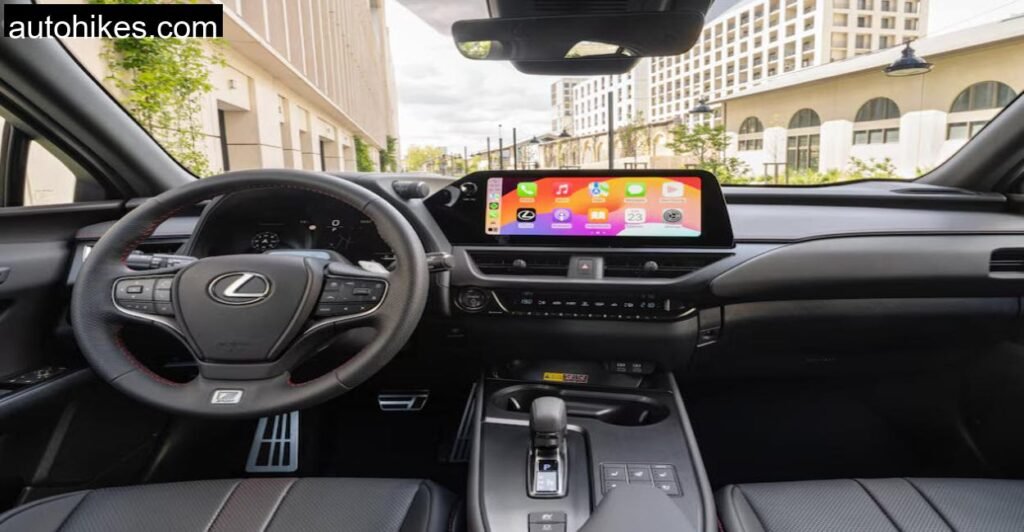
Step inside the UX 300h and you’re greeted not with flash, but with form. Lexus hasn’t tried to reinvent the wheel here, just make it feel better in your hands. The cabin materials exude warmth. My test car had a tan-and-black dual-tone interior with contrast stitching and gently padded door cards. The seats were supportive, and the front buckets, though not aggressively bolstered, cradled me through every twist without fatigue.
The dashboard is an elegant blend of analog tactility and digital clarity. A new 12.3-inch touchscreen anchors the center console, and thankfully, Lexus has retained physical controls for the climate and seat ventilation. No endless submenus here.
Rear space, however, is the UX’s Achilles’ heel. With my driver seat adjusted to 6 feet, the rear bench left little legroom. And that sloping roofline? It makes ingress and egress a tight affair for taller passengers. The boot is another compromise, 315 liters with seats up, which meant our hiking gear had to be Tetris-stacked.
Fuel Efficiency and Real-World Range
Now to what many buyers of this hybrid Lexus care most about: economy. Lexus claims around 5.0 liters per 100 km. On our mixed route, which included urban stops, climbing sections, and 80–130 km/h highway stretches, I averaged 5.8 L/100 km. Not too far off the mark, especially given the altitude changes and enthusiastic driving in some sections.
The 43-liter tank offers roughly 700–750 km of real-world range. That’s enough for most weekend adventures without frequent fuel stops. And the best part? The UX never begged for attention. No vibrating pedal, no over-eager regeneration. Just a calm, cooperative partner.
Safety and Driver Assistance: A Subtle Hand That Guides
The UX 300h is laced with intelligent safety aids, but unlike many systems that interfere or startle, the Lexus’s implementation is polite. Adaptive cruise held distances well even in tighter curves. Lane-keeping assist offered gentle nudges, not abrupt corrections.
City-based features like the emergency pedestrian braking and cyclist detection didn’t trigger false alerts during our tests in Füssen. The system’s responsiveness was reassuring but nonintrusive. There’s also a smart exit alert system, which I appreciated when parked along a narrow layby near Schattwald, alerting me of an approaching cyclist just in time.
What I Liked, and What I Didn’t
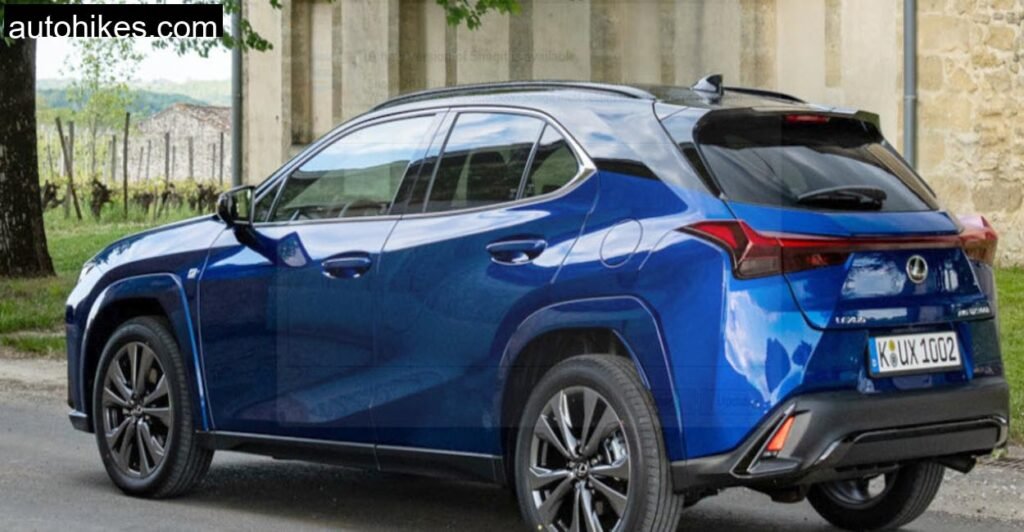
Let’s talk brass tacks. The UX 300h is not perfect, but it is consistent. It excels in delivering a smooth, composed hybrid experience. The build quality is stellar. The sound insulation rivals much more expensive models. And the economy figures speak for themselves.
What doesn’t work as well is its practicality. The rear seats are too tight for adults on longer trips. The trunk space is below par for an SUV badge. And the pricing? At nearly €61,000 for the E-Four model, you’re paying a premium for a luxury badge and hybrid elegance, not raw utility.
But if your priorities are refinement, peace of mind, and a truly cohesive drive, it starts making a lot of sense.
Conclusion: Not Just Interesting, Intriguing
I began this journey through Hahnenkamm expecting the Lexus UX 300h to be “just another” hybrid SUV. What I discovered instead was a car that doesn’t rush to impress. It invites you in, earns your trust slowly, and grows on you with every kilometer. It may lack outright space or visceral thrill, but it more than makes up for it in comfort, efficiency, and seamless hybrid execution.
By the time I rolled back toward the lodge as the clouds started to break over the alpine ridges, I felt a kind of harmony that only a few cars offer. The UX 300h doesn’t dazzle, it calms. And in a world that never stops rushing, that might just be its greatest luxury.
Is the Lexus UX 300h fast?
Not really. It reaches 0–100 km/h in about 8.1 seconds in the E-Four version. It’s not designed for speed but for smooth, quiet efficiency.
How fuel efficient is the Lexus UX 300h in real-world driving?
In our mixed test through Hahnenkamm, it returned an average of 5.8 liters per 100 km, not far from the claimed 5.0 L.
Can the Lexus UX 300h handle snow and mountain roads?
Yes. Especially in the E-Four version with all-wheel drive, the car performed confidently on wet and uneven alpine roads.
